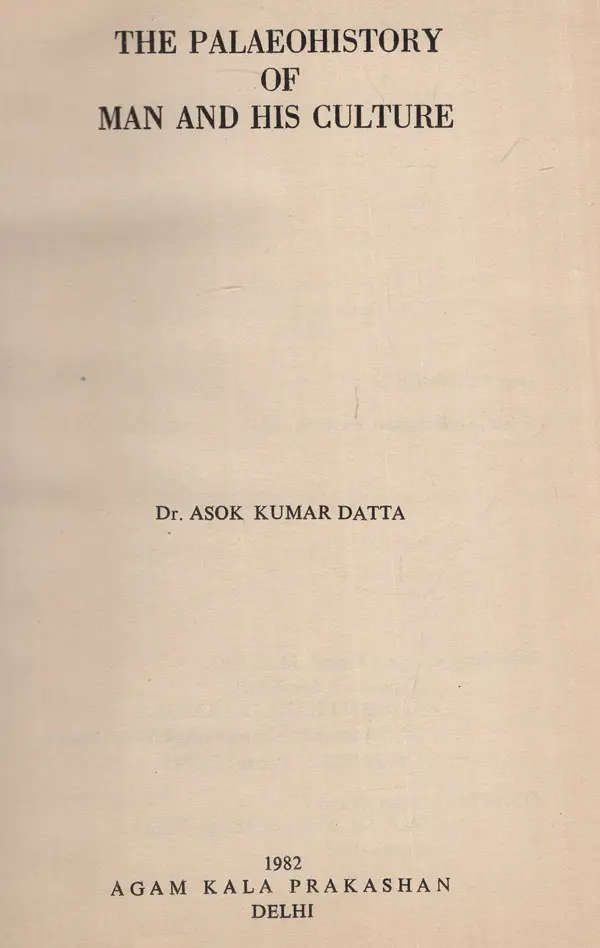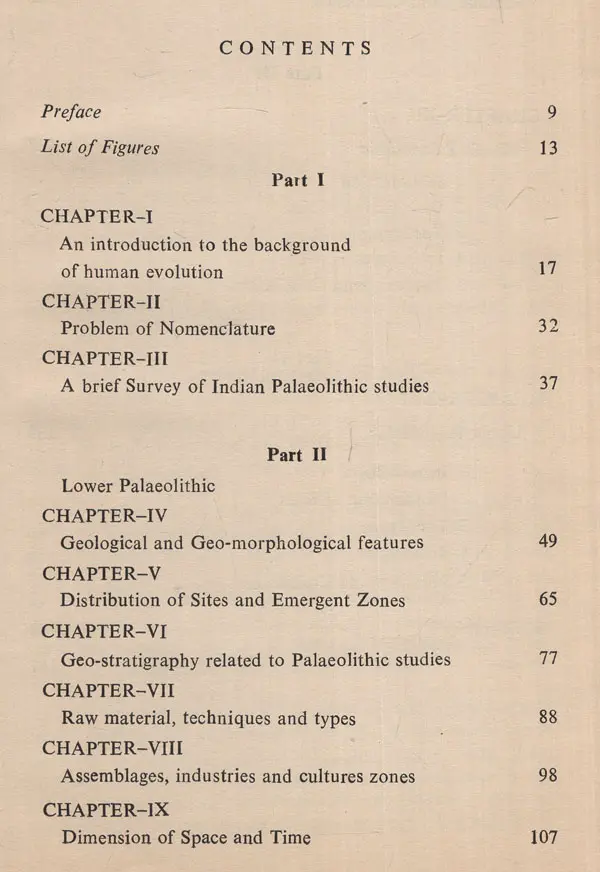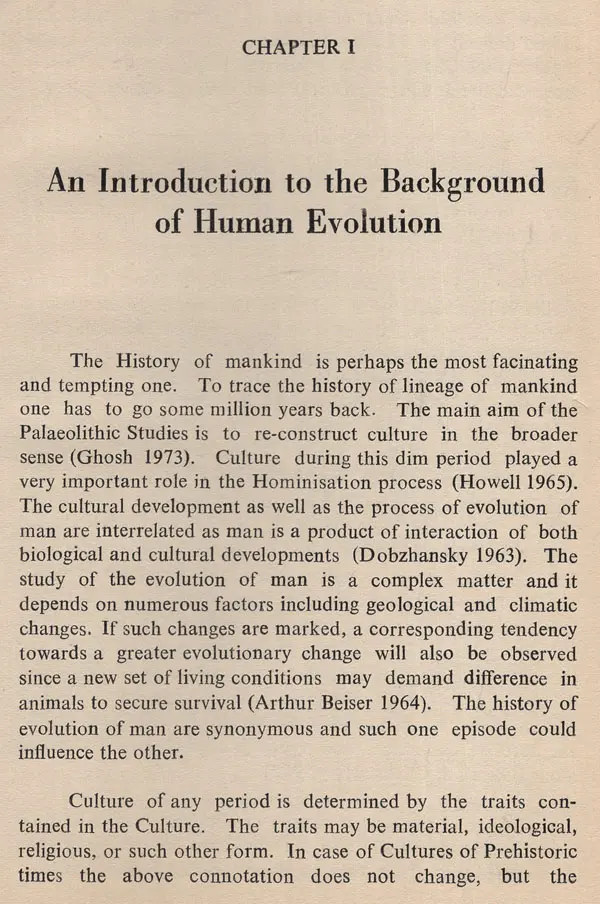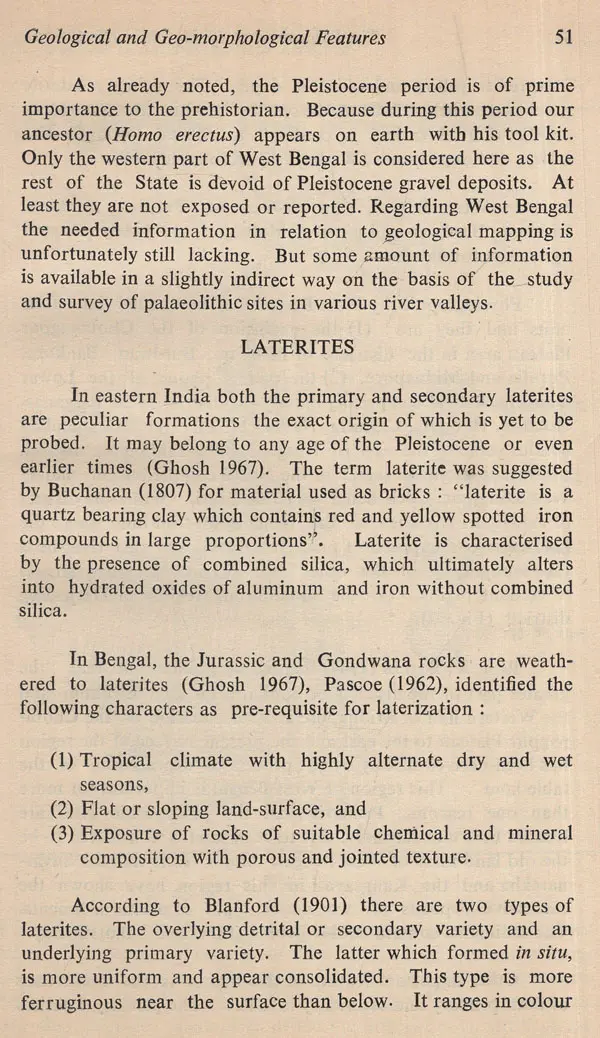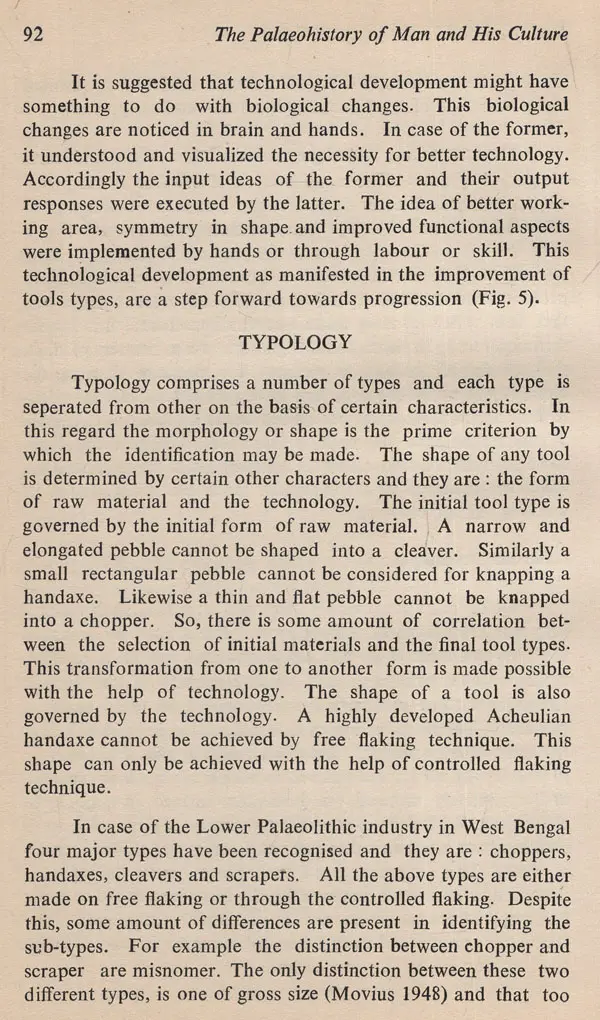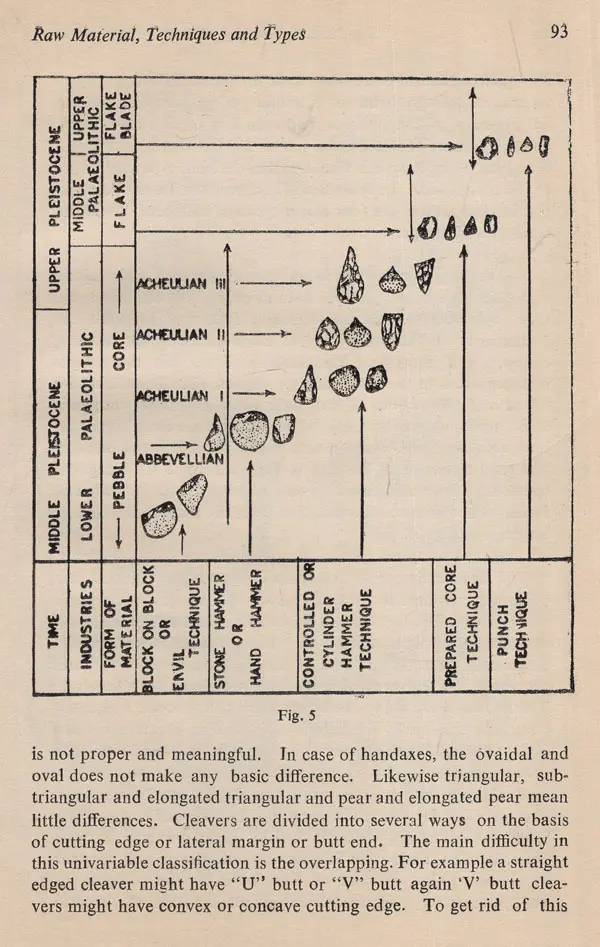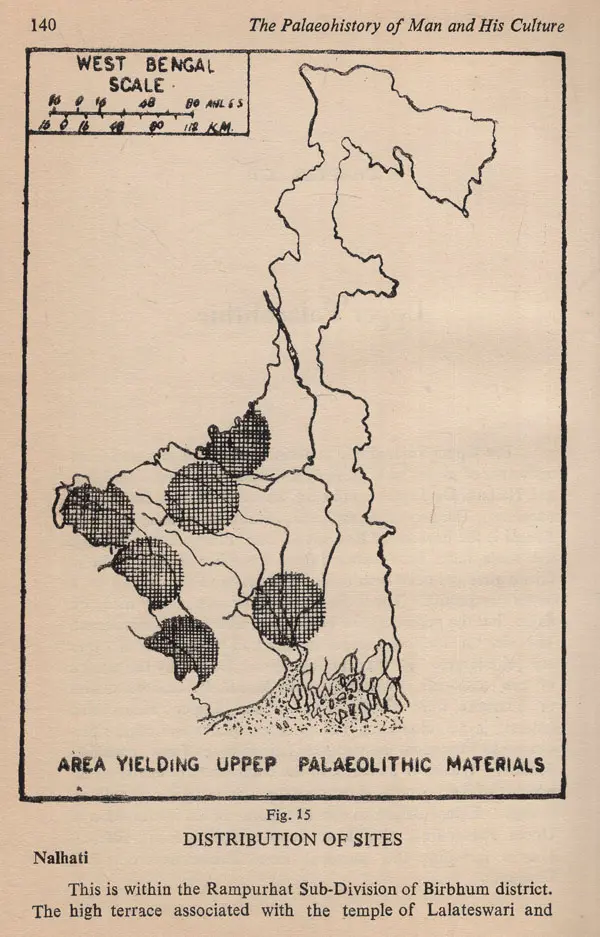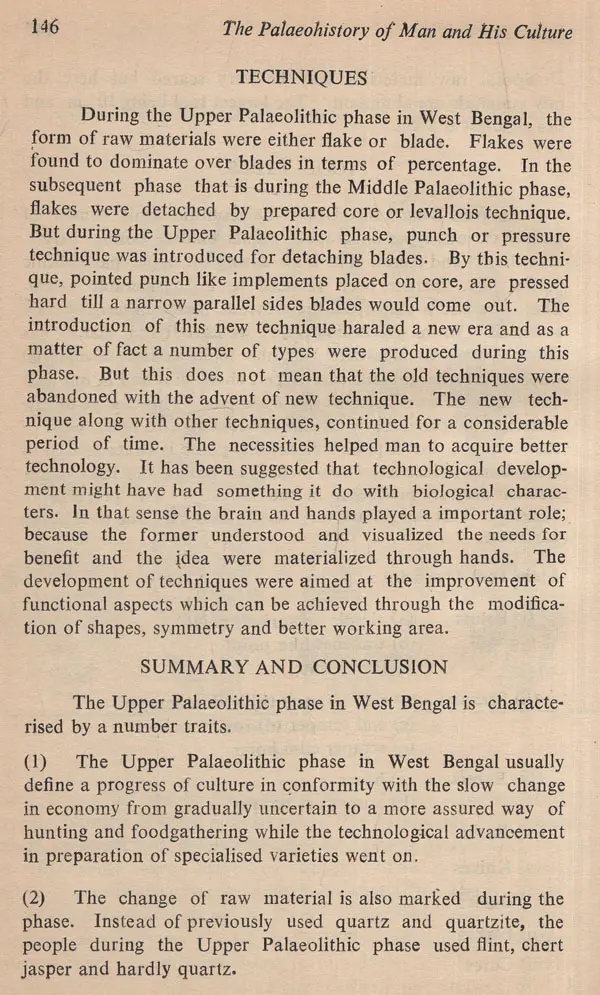
The Palaeohistory of Man and His Culture (An Old and Rare Book)
Book Specification
| Item Code: | UAS340 |
| Author: | Asok Kumar Datta |
| Publisher: | Agam Kala Prakashan, Delhi |
| Language: | English |
| Edition: | 1982 |
| Pages: | 167 |
| Cover: | HARDCOVER |
| Other Details | 9.00 X 6.00 inch |
| Weight | 350 gm |
Book Description
The history of man and his culture during the Pliestocene time period has been dealt with in this book. The exciting topic is treated in four main parts. In Part I, the author gives a comprehensive idea of human evolution on the basis of fossil finds from. different parts of the world. The problem of nomenclature has also been dealt with. The author makes a brief survey of the Palaeolithic studies in India. Part II, deals with the pre-history of West Bengal specially the lower Palaeolithic culture.
Within the lower Palacolithic period, we find a number of industrial components and that too is not consistent. As a matter of fact, there is a good deal of variation in the distribution and frequency of three major types. This uneven distribution (specially when the early men knew the techniques of making three major types) was imposed by the negative parts of environments. To overcome these difficulties the early men expressed the same in term of material manifestation. The specific type was made to cope with specific needs. The number of types and the frequency of the same are dependent on the nature of necessities. A careful analysis of different tool types and the frequency of the same from six major localities in West Bengal has led to the demarcation of three major culture zones. While dealing so, maximum attention was given to different aspects of geo-morpho logy, geo-stratigraphy, distribution, types, techniques, raw materials, palaeo-ecology etc. which are closely related to the study of prehistory.
In Part III and IV, the author deals with the middle and upper Palaeolithic culture along its distribution, tool types and techniques.
Asok Kumar Datta, M.A., Ph.D., was born in Mymansingh, Bangladesh in April 1947. He did his M.A. in Archaeology and Ancient Indian History and Culture from Calcutta University in 1970 and 1973 respectively.
In 1981 (January) he was awarded the Ph.D. degree in Anthropology by the University of Calcutta for his dissertation work on "Pebble-Core element in India -a study on geo-cultural varia tion." He has published a number of papers in different journals. He is, at present, engaged in prehistoric research in connection with his new book on Mesolithic and Neolithic pro blems in India,
The history of Prehistoric research in the Indian sub-continent was accelerated by Robert Bruce Foote with the discovery of Palaeoliths from Pallavaram near Madras in the year 1863 and since then innumerable sites along with a huge number of stone tools have been discovered over a wide area covering the map of whole India except Assam and Kerala where Palaco-environment was not perhaps favourable for the growth of prehistoric habitation.
During this century, a number of Indian and Foreign scholars have worked on prehistoric cultures. But what is the net result? Barring a few exceptions, no serious attempt was made to understand the prehistoric culture with its problems related to Palaco-culture of this sub-continent.
Some amount of valuable works were done in North-West India by Yale-Cambridge expedition led by De-Terra and Pater son, in Western India by Paterson and Drummond, in South India by K.D. Banerjee, Eastern India however remains the most unattended area. The only excavation at Mayurbhanj in this region, carried out by D. Sen and N.K. Bose, has yielded some good result. About Singhbhum, A. Ghosh has made some valuable contribution on stone age culture.
In West Bengal, the acceleration of prehistoric research was made by Ball with the discovery of Palaeoliths from Bankura in the year 1883. But unfortunately, after that momentum discovery of Ball, there was a complete vaccum for about a century. It was only from 1960 onwards the prehistoric research got it's recognition through the works of scholars like V.D. Krishnaswami, D. Sen. N.K. Bose and A. Ghosh. The total result of these works are the enlargement of prehistoric map of West Bengal. But as yet no serious attempts were made to break through the conventional idea of collection of stone tools and location of sites. As a matter of fact many questions remain unanswered even today. For example we do not know why Choppers, Handaxes, and Cleavers are not found proportionately from a particular place? why the range of variation is so wide? Is it due to ecology of a particular place? or different group of people are responsible for Choppers and biface traditions? We do not know whether the lower palaeolithic tools recovered from this part of the country, either from gravels (Bed 1) or laterite, geologically belong to the same period of other sites found elsewhere in India we do not also know pre cisely where the lower palaeolithic ends and succeeds by middle palaeolithic? The Question whether the Neandarthal people, who are responsible for middle palaeolithic (Mousterian) culture of Europe and other parts of the world, are also the makers of middle palaeolithic industry of West Bengal, remain still unanswered. There are many such queries which are yet to be solved.
In the absence of any absolute dating it is very difficult to get any precise answer. The only alternative left to us is to rely on geo-stratigraphy and typology. In West Bengal, the in situ materials, specially of middle and upper palaeolithic period, are very rare. In that case typology along with technology can help in an indirect way, and that too is of immense help.
The present work is an attempt in this direction. An attempt has been made here to find out the uneven distribution of Choppers, Handaxes and Cleavers, and the resultant picture of this statistical compilation of datas from different sources. helps the emergence of three cultural zones, each having a maximum coverage of a particular type. While considering the materials, due attention was given to palaeo-ecology, geo stratigraphy, technology and such other forms related to the palaeolithic cultures of West Bengal.
Book's Contents and Sample Pages
